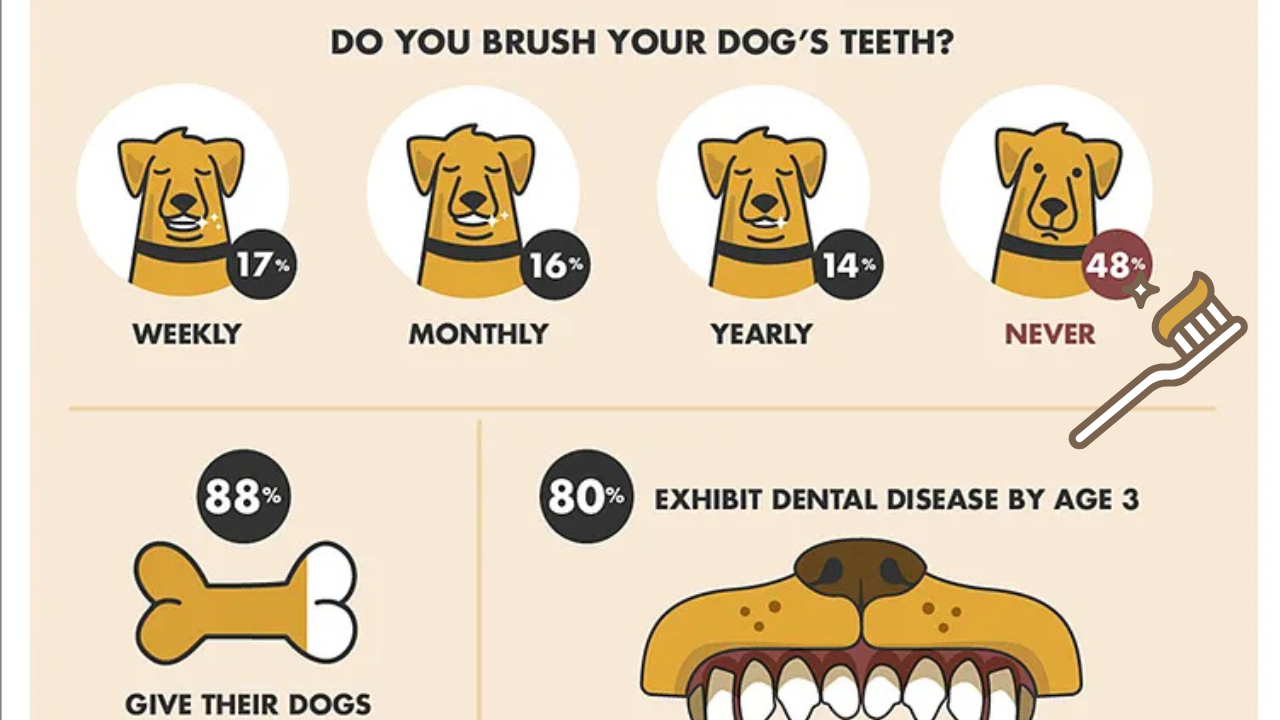Does your pet have bad breath that could clear a room? When you lift their lip, are their teeth yellow or brown with visible tartar buildup? These signs indicate dental problems that affect 80% of dogs and 70% of cats by age three.
Poor dental health isn’t just cosmetic—it can lead to painful tooth loss, infections that spread to vital organs, and expensive veterinary procedures. The encouraging news is that with proper care, most dental problems are preventable.

Why Pet Dental Care Matters
Periodontal disease begins with plaque buildup, progresses to tartar formation, and eventually causes gum recession, tooth loss, and systemic infections. Bacteria from infected gums enter the bloodstream and can damage the heart, liver, and kidneys.
Signs Your Pet Needs Better Dental Care
Visible Signs:
- Yellow or brown tartar on teeth
- Red, swollen, or bleeding gums
- Loose or missing teeth
- Visible plaque accumulation
Behavioral Signs:
- Persistent bad breath
- Difficulty eating or chewing
- Pawing at the face or mouth
- Excessive drooling
- Changes in eating habits
Essential Pet Dental Care Tips
1. Establish Regular Tooth Brushing
Frequency: 2-3 times per week minimum, daily preferred
Tools: Pet-specific toothbrush and toothpaste (human toothpaste is toxic to pets)
Technique: Start slowly, use circular motions, focus on the gum line
2. Choose the Right Dental Products
Always use products specifically designed for pets. Look for the Veterinary Oral Health Council (VOHC) seal of acceptance, which indicates proven effectiveness.
3. Introduce Tooth Brushing Gradually
Week 1: Let your pet taste the toothpaste
Week 2: Touch their teeth with your finger
Week 3: Introduce the toothbrush without paste
Week 4: Combine toothbrush with toothpaste for short sessions
4. Use Dental Chews and Toys Strategically
VOHC-approved dental chews help reduce plaque and tartar. Choose size-appropriate options and use as supplements to, not replacements for, regular brushing.
5. Consider Water Additives
Dental water additives can help reduce bacteria in your pet’s mouth. Add to their regular water supply according to package instructions.
6. Monitor Diet Impact on Dental Health
Dry kibble provides some teeth-cleaning action through chewing. Wet food tends to stick to teeth more but provides other nutritional benefits. Balance based on your pet’s overall health needs.
7. Schedule Professional Dental Cleanings
Even with excellent home care, pets need professional cleanings every 1-3 years depending on breed, age, and individual needs. These cleanings address areas unreachable by home care.
8. Recognize When to Seek Veterinary Care
Contact your veterinarian immediately if you notice:
- Severe bad breath that worsens suddenly
- Difficulty eating or apparent mouth pain
- Excessive drooling or pawing at the mouth
- Visible abscesses or swelling around the face
Age-Specific Dental Care Approaches
Puppies and Kittens (Under 1 Year)
- Start dental care early for easier acceptance
- Focus on getting them comfortable with mouth handling
- Baby teeth naturally fall out, but establish good habits now
Adult Pets (1-7 Years)
- Maintain consistent brushing routines
- Use dental chews and toys regularly
- Schedule professional cleanings as recommended
Senior Pets (7+ Years)
- Increase monitoring for dental issues
- Be gentle with potentially sensitive gums
- Work closely with your veterinarian on care plans
Common Pet Dental Care Mistakes
Using human toothpaste: Contains ingredients toxic to pets
Skipping gradual introduction: Rushing leads to negative associations
Ignoring back teeth: Plaque commonly accumulates on rear molars
Substituting dental chews for brushing: Chews supplement but don’t replace brushing
Avoiding professional cleanings: Home care alone isn’t sufficient for complete health
DIY vs. Professional Dental Care
What You Can Do at Home
- Daily brushing and plaque removal
- Provide appropriate dental chews
- Monitor for signs of problems
- Maintain overall oral hygiene
What Requires Professional Care
- Tartar removal below the gum line
- Treatment of periodontal disease
- Tooth extractions if necessary
- Comprehensive oral health assessments
Real Success Story
Lisa’s 8-year-old Labrador had severe dental disease requiring $2,000 in extractions and treatment. After implementing daily brushing and other professional care, her younger dog has maintained excellent oral health, avoiding similar problems entirely.
Cost Comparison: Prevention vs. Treatment
Annual Prevention Costs:
- Pet toothbrush and toothpaste: $15-25
- Dental chews: $50-100
- Water additives: $20-30
- Total: $85-155 per year
Treatment Costs for Dental Disease:
- Professional cleaning: $300-800
- Tooth extractions: $500-1,500 per tooth
- Treatment of infections: $200-500
- Total potential costs: $1,000-3,000+
Start Protecting Your Pet’s Oral Health Today
Begin with small steps—let your pet smell and taste pet toothpaste, then gradually work up to regular brushing. Consistency matters more than perfection.